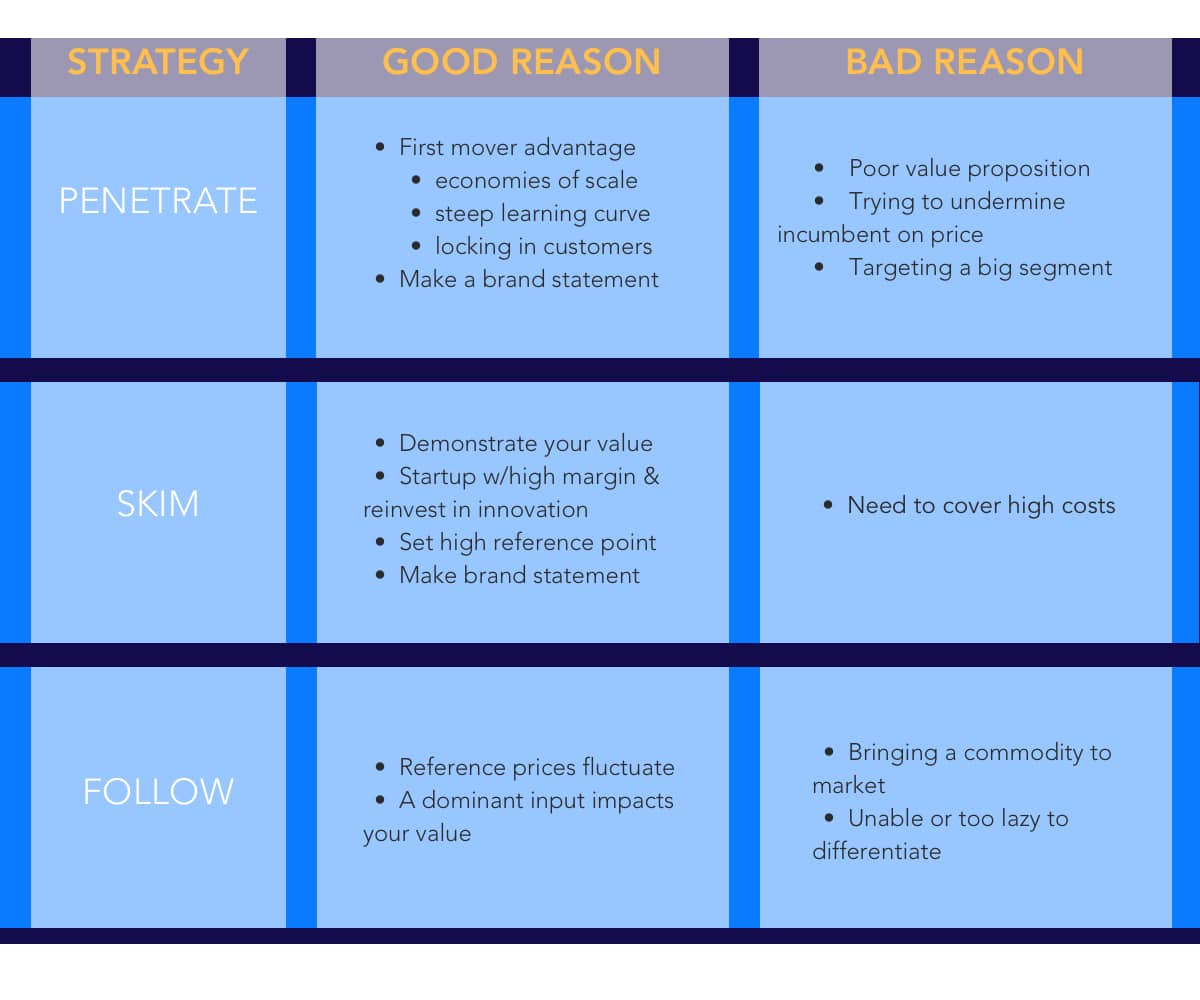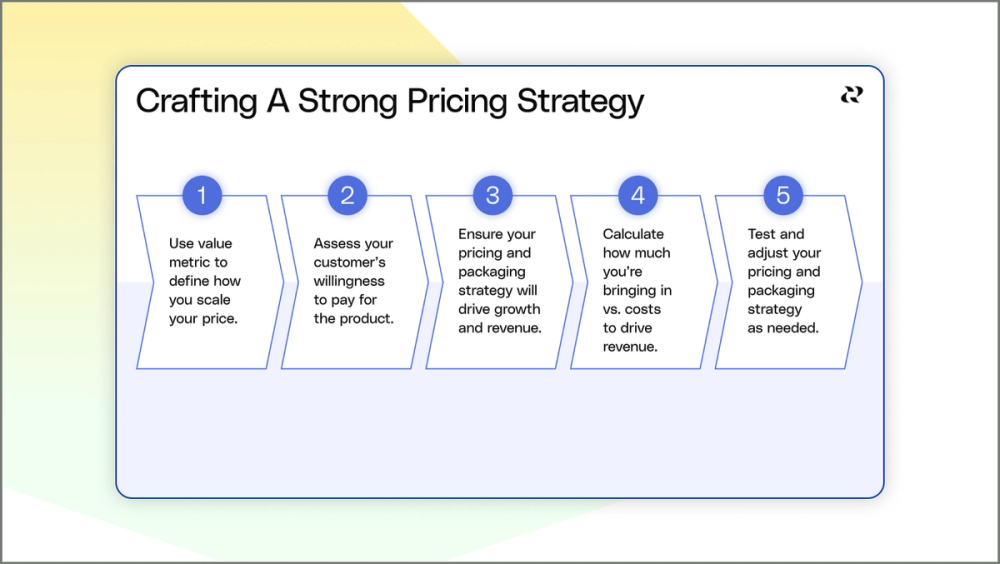Reviewing the Effectiveness of Your Pricing Strategy in a Changing Market
Reviewing the Effectiveness of Your Pricing Strategy in a Changing Market
Blog Article

Master Effective Prices Approaches to Make Best Use Of Earnings
In the ever-evolving landscape of commerce, understanding effective pricing approaches is vital for companies intending to make the most of revenue. A nuanced understanding of pricing psychology can substantially influence client behavior and getting choices.
Understanding Pricing Psychology
Understanding rates psychology is important for services intending to enhance their pricing methods. This area analyzes exactly how consumers perceive costs and just how these assumptions affect their getting choices. Key ideas in prices psychology consist of the anchoring effect, where the initial price provided acts as a recommendation point for customers, and the principle of cost level of sensitivity, which differs amongst different consumer sectors.
Furthermore, services can leverage the notion of viewed value, where the perceived benefits of a services or product can justify a higher cost factor. Premium pricing can produce an aura of exclusivity, drawing in customers that connect higher rates with premium quality. On the other hand, mental rates, such as setting a rate at $9.99 rather than $10, can substantially influence consumer behavior by making costs show up more appealing.
Moreover, scarcity and urgency can improve the viewed value of items, triggering quicker buying decisions. Understanding these mental triggers enables businesses to develop prices methods that not only drive sales but additionally foster consumer loyalty. Therefore, mastering prices psychology is crucial for efficient pricing technique formulation, bring about boosted success and market positioning.
Executing Value-Based Prices

First, conduct comprehensive market study to determine the value drivers for your target market. This can include features, quality, brand name reputation, and client service. Next off, section your consumers based upon their willingness to pay and the value they perceive. By doing so, you can customize offerings and prices techniques to straighten with various sections.
After gathering understandings, set costs that show the optimum amount a client agrees to pay, making sure that they regard a fair exchange for the value obtained. Interact the worth proposition properly, highlighting the advantages and differentiators of your offering. Continuously keep track of market conditions and client feedback to improve your rates technique over time. By applying value-based pricing, services can boost success while fostering lasting consumer commitment.
Exploring Dynamic Prices Designs
In today's rapidly changing market landscape, dynamic prices versions have actually become a powerful method for organizations seeking to enhance income and respond to changes in need. These versions permit firms to adjust their costs in real-time based upon different factors such as consumer habits, market patterns, and supply levels. By leveraging data analytics and formulas, businesses can determine optimal rates factors that make the most of sales while staying competitive.
Dynamic pricing can take numerous types, consisting of time-based rates, where costs change based on time of day or season, and demand-based pricing, which changes prices according to existing consumer need. This versatility not just enhances productivity but additionally boosts consumer satisfaction by using prices that mirror real-time market problems.
Implementing dynamic rates calls for a durable technological facilities and a deep understanding of client sectors. Clear interaction about prices adjustments can assist mitigate customer frustration and foster trust, ultimately leading to continual success in a competitive marketplace.
Studying Competitor Prices
Checking competitor pricing is important for services aiming to keep an one-upmanship in their respective markets. By examining competitors' pricing methods, firms can identify market fads, recognize customer preferences, and adjust their prices as necessary. This evaluation involves gathering data on rivals' rates, promotional techniques, and product offerings to inform rates decisions.
To properly evaluate competitor rates, services need to utilize different tools and methods, such as rate monitoring software program, market research study reports, and customer responses. This information can expose just how rivals position their items and services, allowing organizations to separate their offerings or take on comparable approaches to continue to be appropriate.
In addition, it is crucial to categorize rivals right into straight and indirect competitors. Direct rivals use comparable items or services, while indirect competitors may satisfy More hints the exact same customer demand with various services. Recognizing the nuances in between these teams will enable organizations to tailor their prices methods a lot more effectively.
Inevitably, ongoing competitor pricing evaluation is important for making educated prices decisions. It enables organizations to continue to be agile in action to market changes, guaranteeing they can confiscate possibilities and reduce threats related to prices techniques.
Evaluating Prices Efficiency
Recognizing exactly how competitor pricing influences market characteristics leads to an all-natural focus on assessing pricing efficiency within one's very own business. This examination is critical for recognizing areas of toughness and possibilities for enhancement, eventually improving profitability.

Additionally, performing normal rates audits can disclose inconsistencies in between anticipated and real efficiency. This involves comparing prices data throughout various sectors and networks to understand variances and determine trends. In addition, integrating client responses can supply insights into perceived value versus actual prices, making sure positioning with market expectations.
Last but not least, leveraging data analytics tools can promote deeper understandings right into pricing efficiency, enabling businesses to make data-driven adjustments (Pricing Strategy). By continually assessing pricing efficiency, companies can adjust to market changes and optimize their approaches, ensuring navigate to this site continual success in an affordable landscape
Conclusion
Reliable prices approaches are essential for maximizing revenue in an open market. By leveraging pricing psychology, businesses can boost perceived worth and tailor rates to varied customer sections. The adoption of value-based and vibrant pricing designs helps with real-time adjustments based on demand and customer willingness to pay. Furthermore, continual analysis of competitor pricing and efficiency metrics ensures strategic agility. Inevitably, a comprehensive strategy to rates not just drives productivity but additionally promotes customer contentment and commitment.
Comprehending rates psychology is essential for services intending to maximize their pricing strategies. Recognizing these mental triggers allows organizations to create rates methods that see this site not only drive sales but also foster client commitment. Hence, mastering rates psychology is vital for effective pricing technique solution, leading to enhanced profitability and market positioning.
By evaluating rivals' prices methods, companies can determine market patterns, understand customer choices, and change their prices as necessary. By leveraging pricing psychology, companies can improve perceived worth and tailor prices to diverse customer sectors.
Report this page